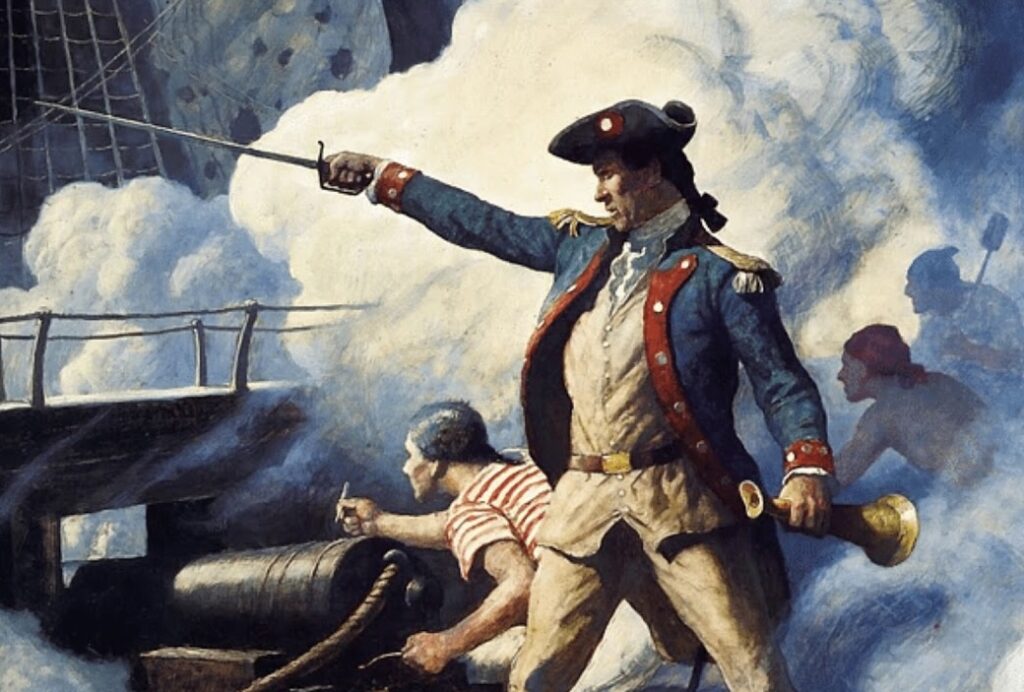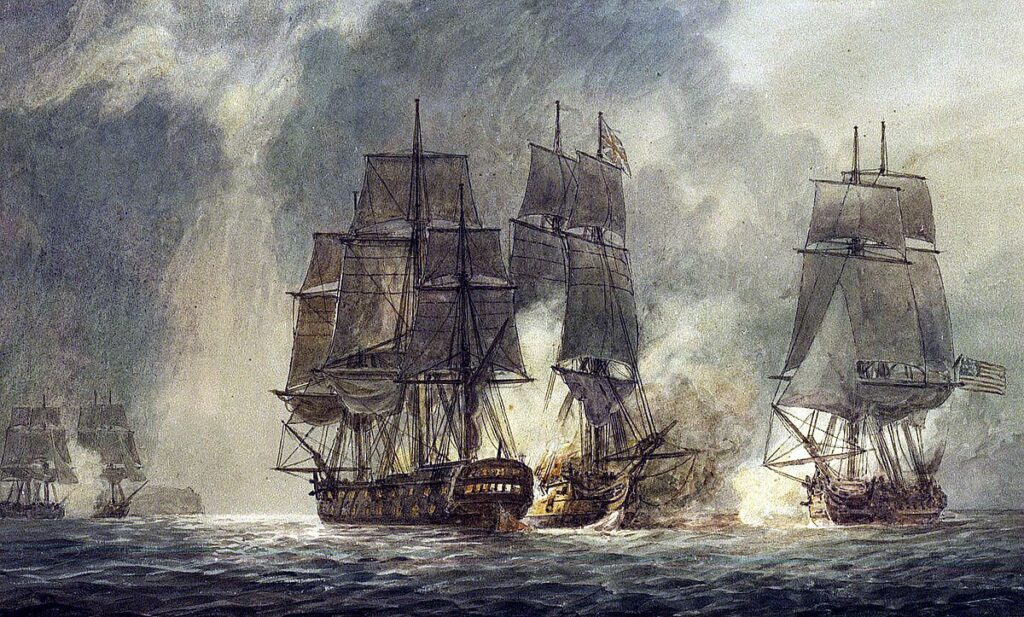There is no shortage of heroes who rose to prominence during the American Revolution, but few compare to the legacy of John Paul Jones. A Scotsman by birth, he came to the fledgling United States but joined the Continental Navy as an American. Although many of his newfound countrymen would enjoy victories over Great Britain in the years to come, only Capt. John Paul Jones, the “Father of the U.S. Navy,” would ever bring the war home to the British.

John Paul Jones Rose as the Father of the U.S. Navy
Born in 1747, young John Paul (not yet Jones) began his sailing career at the tender age of 13. He spent a considerable amount of time traveling across the Atlantic Ocean from England to Virginia as a merchant mariner. It was as a merchant that he got his first chance to command a ship. He was 21 years old when the captain and first mate of his ship suddenly died of Yellow Fever, and it was John Paul who successfully navigated the vessel back to its home waters.
He soon became the ship’s master, but after two voyages to the West Indies, he was forced to flog a mutinous crewman. When the crewman later died of wounds related to the flogging, he fled to London, where he commanded an armed merchantman. After he was accused of killing yet another crewman over wages in 1773, he fled once more. He reappeared in Virginia with the name John Paul Jones.

Jones fell in love with what would soon become the United States. So when it came time to break ties with Great Britain, he rushed to offer his seagoing services to the nascent Continental Navy. It would be his first step toward immortality. On Dec. 3, 1775, then-1st Lt. John Paul Jones raised the flag aboard the Alfred, his first ship in the Navy. A year later, he would take his first command in the Navy, a sloop named Providence.
In command of the Providence, he captured eight enemy ships in the Atlantic, sunk or burned eight more, and took home several prizes. On June 14, 1777, he officially took command of a brand-new vessel, the Ranger. It was aboard this new ship that Jones would strike fear into the British public and would enter the history books of naval warfare. He was sent to the Irish Sea to wreak havoc on British shipping and ships at home. For two years, he was very successful at it.

John Paul Jones Attacked Britain’s Shores with Bold Raids
In 1778, Jones and the Ranger captured the British warship HMS Drake in its home waters, then sold it to France, creating a furor among British citizens. Suddenly, the imposing Royal Navy wasn’t as invincible as it once seemed. But it was shortly after taking Drake that he performed a feat no other American leader could do during the Revolutionary War: he attacked England itself.
On Apr. 23, 1778, Jones and two boats filled with 30 men rowed into the waters of Whitehaven, England. Some 400 British ships were moored in the shallow harbor. They had intended to arrive at midnight, but trouble with the boats kept them until morning. Still, when dawn came, Jones and his men captured the harbor’s southern fort, then set a fire that would burn the entire town.
To celebrate his victories, the French gave him a heavily armed frigate called the Duc de Duras. It was a slower warship than Jones would have liked, but it came with 42 guns, and that was enough for him. He rechristened it the Bonhomme Richard, named after Benjamin Franklin, and set out once again.

John Paul Jones Won a Legendary Naval Victory
This time, at the head of a squadron of seven ships, Jones sailed around Ireland and Scotland. While there, he learned of a merchant convoy headed for London from the Baltic Sea. Since it was carrying war supplies that the British could no longer acquire from their American colonies, he knew he had to intercept them. Jones and his Franco-American squadron famously met HMS Serapis and the Countess of Scarborough at Flamborough Head, off the coast of Yorkshire.
After three and a half hours of fighting, the Bonhomme Richard rammed the Serapis, lashed onto her with boarders, and forced its surrender with a tactical grenade. The Bonhomme Richard would be lost and the rest of the merchant fleet would sail on, but Jones, in command of the Serapis, sailed for the Netherlands, where he was welcomed as a hero.
Read About Other Profiles in Courage
If you enjoyed learning about Capt. John Paul Jones, we invite you to read about other profiles in courage on our blog. You will also find military book reviews, veterans’ service reflections, famous military units and more on the TogetherWeServed.com blog. If you are a veteran, find your military buddies, view historic boot camp photos, build a printable military service plaque, and more on TogetherWeServed.com today.

Whew ! what a life Jone Paul Jones lived. So young too.